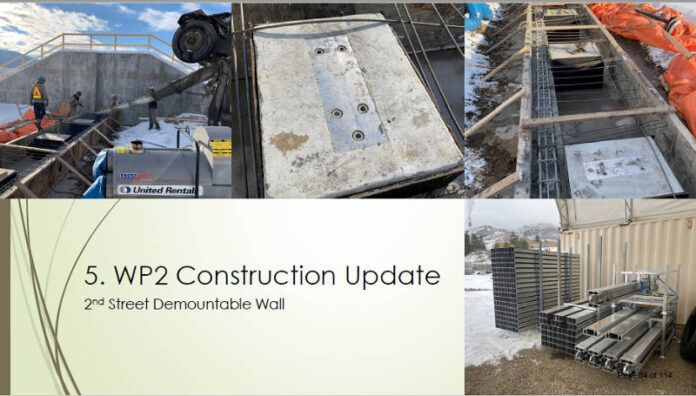Measures put in place in Grand Forks to prevent a repeat of damage caused by the 2018 flood worked as planned when river levels rose this month.
“The infrastructure worked as intended and very well,” said Justin Dinsdale, the local manager of the disaster mitigation adaptation fund.
“The water came up and we were protected in those areas. We were very relieved. The whole demeanor of the town seemed to be much better this time round because of those protections, so it worked quite well.”
The floods five years ago on the Granby and Kettle rivers devastated local homes and businesses.
In 2019, the federal and provincial governments promised nearly $50 million to ensure the damage would not be repeated. In addition to removing and relocating houses, the plan called for reinforcing the river bank along Johnson Flats, re-establishing the natural flood plain in North Ruckle, and building a network of dykes in key areas.
Dinsdale says the dykes were built with a 200-year flood return period in mind, anticipating climate change, and higher than what water levels hit in 2018. The flooding that hit this month was below that height.
With two phases of the project completed, emergency crews were able to focus on unprotected areas with temporary measures.
“This year, unlike previous years, we really only had to focus on three areas that were at flood risk within the city,” Dinsdale says. “The other areas, downtown and North Ruckle, were protected through the other flood mitigation measures, so we were only battling on three fronts instead of seven or eight, which would have been the case in years past.”
Dinsdale said some low-lying areas within the city and regional district did still experience flooding, but it’s very difficult to protect the entire area, even temporarily.
The works program Dinsdale created consisted of six phases, five within the city and one in the rural area. The first was to protect homes and businesses in the downtown core and the second protected the industrial area as well as critical city infrastructure such was the wastewater treatment plant, public works, and pumping stations. Both phases were completed prior to this year’s freshet, with further work to come.
“Hopefully within another year or two we’ll have the flood risk diminished so much that it won’t be an issue going forward,” Dinsdale said.




